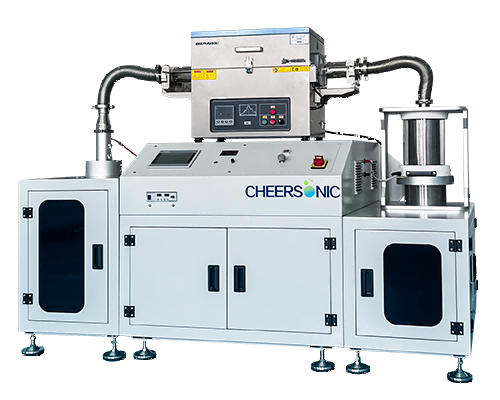Spray Pyrolysis Powder Making
1. The role of nitrogen as a guide gas
- Protective role: In the spray pyrolysis process, nitrogen as a guide gas mainly plays a protective role. Since many metal compounds are easily oxidized with oxygen in the air at high temperatures, nitrogen can create a relatively inert atmosphere to prevent the metal ions in the precursor solution from being over-oxidized. For example, when preparing some metal oxide nanopowders, such as zinc oxide or titanium dioxide nanopowders, nitrogen can avoid the generation of unnecessary high-valent oxides during the high-temperature reaction stage, thereby ensuring the purity and expected chemical composition of the product.
- Control the direction of particle movement: Nitrogen can guide the movement direction of droplets and generated powder particles in the reaction chamber. By reasonably designing the inlet and outlet positions and flow rates of the gas, the droplets can be evenly distributed in the reaction chamber, ensuring that each droplet can fully contact the high-temperature environment for pyrolysis reaction. This helps to improve the uniformity of the product and make the generated powder particles more consistent in size and shape.
2. The influence of weakly acidic dilution solution
- Precursor stability: The use of weakly acidic dilution solution is important for maintaining the stability of the precursor. Many metal salts may undergo hydrolysis in the precursor solution, and a weakly acidic environment can inhibit this hydrolysis. For example, for some metal chlorides or nitrates, the acidic conditions in the solution can prevent the metal ions from forming hydroxide precipitation, ensuring that the metal ions can be evenly dispersed in the droplets in the form of a solution during the spraying process, which is conducive to the subsequent pyrolysis reaction and the expected powder product.
- Product performance regulation: The acidity of the solution may also affect the performance of the final powder. To a certain extent, a weakly acidic environment may change the kinetics of the pyrolysis reaction. For example, it may affect the crystallinity, particle size and distribution of the product. In an acidic environment, the generated powder particles may have better dispersibility because the acidic groups may be adsorbed on the surface of the particles to prevent the particles from agglomerating.
3. The role of the maximum temperature of 1200℃ and its impact on powder making
- Reaction driving force provision: The high temperature of 1200℃ provides sufficient energy for the spray pyrolysis reaction. At this temperature, the solvent in the droplets can evaporate quickly and the solute undergoes a thermal decomposition reaction. For some complex precursors, high temperature helps to break chemical bonds and recombine metal ions with other anions to form target products. For example, when preparing ceramic powders, high temperature can cause metal salts to decompose into metal oxides, such as preparing yttrium aluminum garnet (YAG) powder from aluminum nitrate and yttrium nitrate. At high temperature, these nitrates will decompose and undergo a series of reactions to form YAG nanopowders.
- Improved crystallinity and purity of powders: High temperature is conducive to improving the crystallinity of powders. Under an environment of 1200°C, the generated powder particles have enough time and energy to grow and arrange the lattice, making the crystal structure more perfect. At the same time, higher temperatures can also volatilize some impurities during pyrolysis, thereby improving the purity of the powder. For example, when preparing metal oxide powders, high temperatures can completely burn and decompose possible organic impurities to obtain high-purity oxide powders.
- Effect on powder morphology: Temperature also has a significant effect on the morphology of powders. At 1200°C, depending on different precursors and reaction conditions, powder particles may sinter or agglomerate. If controlled properly, dense powders in spherical, rod-shaped or other shapes can be obtained. However, if the reaction conditions are not suitable, it may lead to excessive particle growth or severe agglomeration, so it is necessary to optimize the powder morphology by adjusting other parameters such as spray rate, solution concentration and gas flow rate.
About Cheersonic
Cheersonic is the leading developer and manufacturer of ultrasonic coating systems for applying precise, thin film coatings to protect, strengthen or smooth surfaces on parts and components for the microelectronics/electronics, alternative energy, medical and industrial markets, including specialized glass applications in construction and automotive.
Our coating solutions are environmentally-friendly, efficient and highly reliable, and enable dramatic reductions in overspray, savings in raw material, water and energy usage and provide improved process repeatability, transfer efficiency, high uniformity and reduced emissions.
Chinese Website: Cheersonic Provides Professional Coating Solutions


